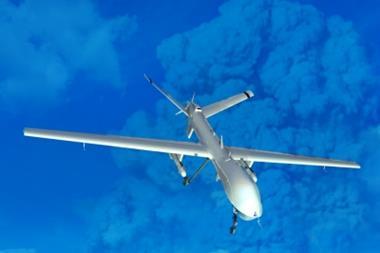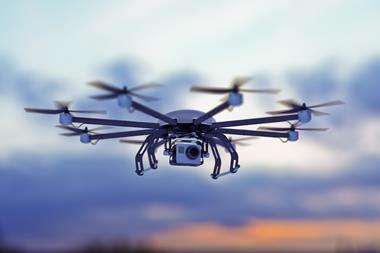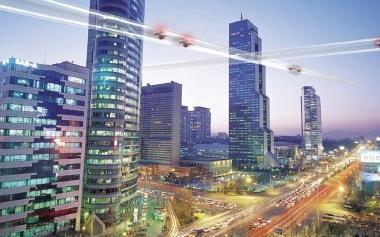Drones are increasingly taking the strain on construction site and risk managers need to prepare now for a day when robots might be wearing the hard hats on construction sites

Drones are increasingly taking the strain on construction sites worldwide for the simple reason that they will do what humans cannot.
“They are extremely useful for de-risking situations from a health and safety angle,” says Kevin Morecroft, vice president, risk management, Skanska AB and head of risk, Skanska Civil Engineering UK.
Drones, also known as unmanned aerial vehicle (UAVs) are small, agile and in particular their ability to use hi-res cameras to relay film and live footage to construction teams on the ground is seen as increasingly valuable.
“Previously we’ve had projects where we couldn’t really be sure of the state of an asset when we were bidding and drone surveys change that,” says Morecroft. “Everyone benefits. We know what we’re bidding on and, in turn, that drives down price.”
Drones also have a role in communications and recently a BBC trained pilot, Jon Bontoft, was given access to Crossrail’s tunnels to produce a video giving the public an insight into what is going on at Europe’s biggest construction project.
“It was a very impressive film,” says Rob Halstead, head of risk management at Crossrail. “And we are exploring the potential of drones in other areas.”
Opportunities versus risks
Just what that potential could be is illustrated by the work of Japanese firm Komatsu, which has recently teamed up with San Francisco-based drone service provider Skycatch, to use UAVs to conduct surveys and produce 3D models of construction projects that can then be used to create live, interactive maps of the sites that allow better management – and offer a distinct competitive advantage.
Similarly, in Austria, Siemens has been using drones to help with surveying work around the Aspern Vienna Urban Lakeside project, one of the largest urban development projects in Europe.
The firm uses UAVs to collect data which is analysed to map out where energy losses are occurring across entire neighbourhoods. This helps to indentify which buildings need to be fitted with more energy efficient materials.
But of course, new opportunities bring with them new risks and UAVs present a range of potential perils, from standard aviation health and safety risks to concerns about privacy and third-party liabilities. Compliance is also a potential problem as legislators in different markets are still catching up with the new technology.
According to Philip Smaje, global head of transportation brokering and chief executive of aerospace at Willis, aviation cover should be an immediate consideration when using UAVs.
For example, companies hiring the services of drone providers will need to look at their contracts carefully and assess whether or not they are dealing with a third-party liability situation where the provider would be responsible.
Insuring drones
“When it comes to insurance, ultimately the market will decide what is available,” says Morecroft. “At the moment insurers either need a lot of data or cover is very expensive. But the more confident insurers become, the more drones are used, the lower the price will become and the market will become more competitive.”
The challenge will be keeping pace with the rapid rate of technological development. Although some professionals remain sceptical about claims that robots may be involved in actual construction tasks. “Health and safety is everything to us,” says Morecroft. “We already work in very restricted environments and it’s hard to see where drones could safely fit in.” Some developers still have bold ambitions.
For example, Indian roboticist Dr Vijay Kumar has developed a fleet of tiny robots that fly in tight formations, with the hope that these could one day fly as a solid shape, multiplying their strength and allowing them to carry out physical jobs.
This technology is still far from being operational. But risk managers need to prepare now for a day when robots might be wearing the hard hats on construction site




















No comments yet